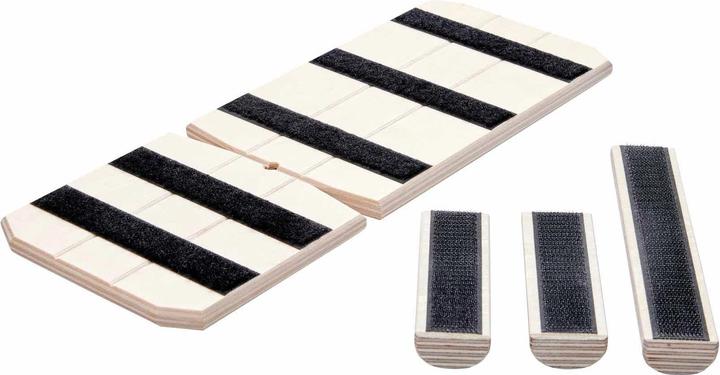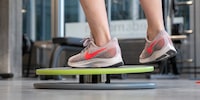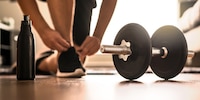

Four weeks until my half marathon – why I’ve also started training my feet
Your feet have to endure a lot when running. With every step, they serve as both a shock absorber and springboard. To ensure that they can cope with the increasing volume and intensity of my running training, I’ve started strengthening them with the Blackboard.
Since I’ve started running more, I’ve also been paying more attention to my feet. I notice the tension on my Achilles tendon and plantar fascia on the bottom of my feet. My top goals in preparing for the Lake Hallwil run on 14 October is to remain injury- and pain-free and have fun. Now that there are only four weeks left until the half marathon, it’s high time to start training my feet too. With their 26 bones and countless muscles, ligaments and tendons, they’re an important base.
Strong feet for any surface
This is why I’ve started training with the Blackboard – admittedly a bit late. But having strong feet won’t be any less important after my half marathon. Especially once I shift my focus back to trail running.
The Blackboard is available in three sets, each with different accessories.
First off: I like wearing barefoot shoes. In fact, I often go fully barefoot in everyday life or opt for my Skinners. My philosophy? I don’t want to pamper my feet too much with padded shoes. I’d rather train them by walking barefoot and running on uneven surfaces. With the Blackboard, I hope to enhance these effects and work specifically on the mobility and stability of my feet. After all, should I step on a root or rock while running, I want my feet to be able to handle it without causing me pain and problems for weeks.
First impressions
The blackboard is made of wood and feels solid. According to the manufacturer, each piece is made by hand in Cologne. I like the compact size, which allows me to take the board with me on trips. The Velcro and accessories mean it can be used in a variety of ways – for strengthening the foot and leg muscles, for mobilisation and for balance training. The thin nubby rubber strips on the wooden elements are also handy. They prevent slipping and ensure the Blackboard doesn’t scratch your hardwood flooring.
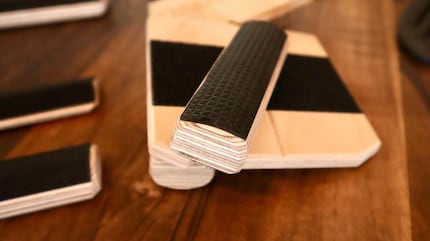
Source: Siri Schubert
I use the comprehensive set with coloured bands for exercising my toes along with the TMX Meta, a rubber nub that I use to massage the bottom of my feet. Like a fascia massage, the sensation is part pleasure and part pain.
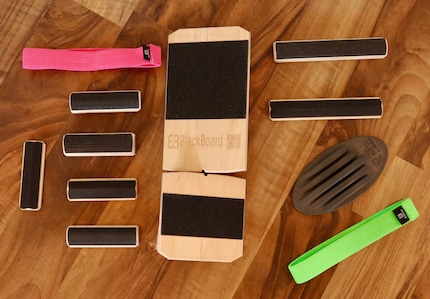
Source: Siri Schubert
The set also includes detailed instructions for each exercise as well as QR codes to access videos. They show you exactly how to configure the board for each exercise and how to perform the exercise correctly.
The first step is always the hardest
The mobilisation exercises look simple. Spoiler alert: they’re not. As I try to move my heel independently of my forefoot without relying too much on my knee and hip for balance, I’m surprised at how difficult it is. There’s definitely potential for improvement. On the other hand, there are other exercises I find easier. In one of the training videos, I learn that people with a high arch (me!) often have low mobility in certain structures of the foot.
The strengthening exercises are fun, but challenging. I can really feel my foot and calf muscles. This is a good sign. It means they’ve been activated and are being strengthened. So far, I’ve only done the seven-exercise routine recommended by Blackboard three times. That’s not often enough to say if and how the Blackboard supports me in my running training. But I’ll continue to use it and will report on my experiences again later.
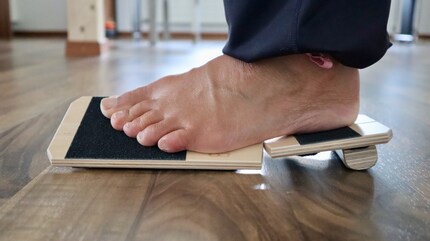
Source: Siri Schubert
Developed by physiotherapists
The idea for the Blackboard came to physiotherapist Lars Grandjot and sports scientist Gregor Stumpf back in 2014. They were working together in a rehabilitation clinic in Cologne, Germany, at the time, when they noticed that many of the athletes they cared for had problems with their gait. So, they set off to create a small, portable device that active people could use to regenerate after injury and, more importantly, prevent injury. «The foot is the first point of contact when we walk, run or jump, and it’s one of the most sensitive areas of our body,» says Lars. His motivation was to find a way to «train the complex biomechanics of the body through very simple means.» A healthy foot is especially important for long-distance runners. Energy from the impact and subsequent stretch is stored in the tendons and ligaments. This energy is then released again during push-off.
The lowdown – an exciting addition to running that I’ll continue to use
The Blackboard is a promising piece of my training plan puzzle. I’ll continue to use it to strengthen my feet, make them more flexible and responsive, and to prevent injury. It’s also a good complement to barefoot running, says Blackboard developer Lars: «After many years in conventional shoes, your foot is often weakened and dysfunctional.» Training with the Blackboard can strengthen atrophied muscles, reducing the risk for overuse and injury when running barefoot or in barefoot shoes, he adds. For me, this is another good reason to treat my feet to this exercise routine several times a week.
Header image: Siri Schubert
Research diver, outdoor guide and SUP instructor – I love being in, on and around water. Lakes, rivers and the ocean are my playgrounds. For a change of perspective, I look at the world from above while trail running or flying drones.
